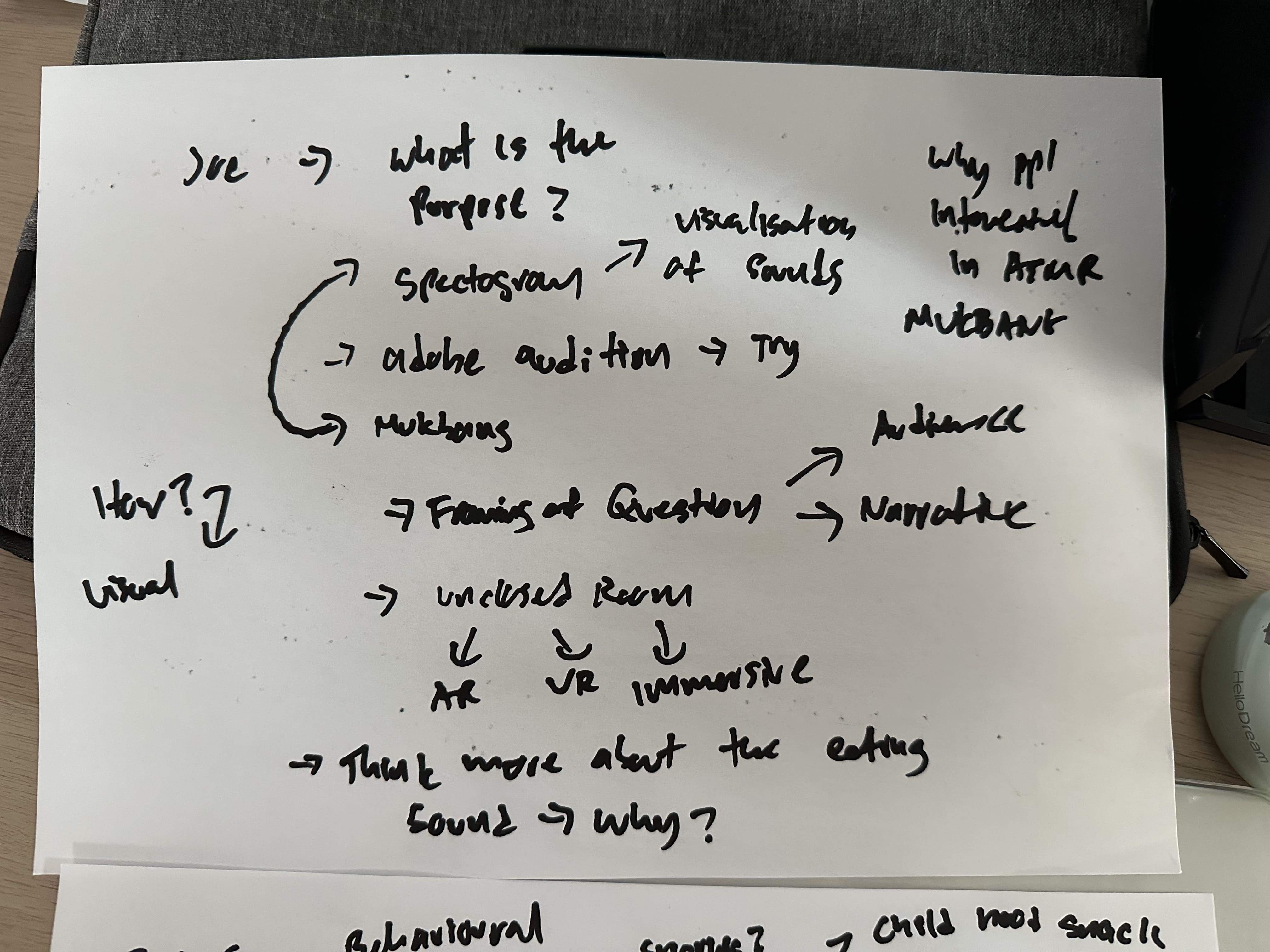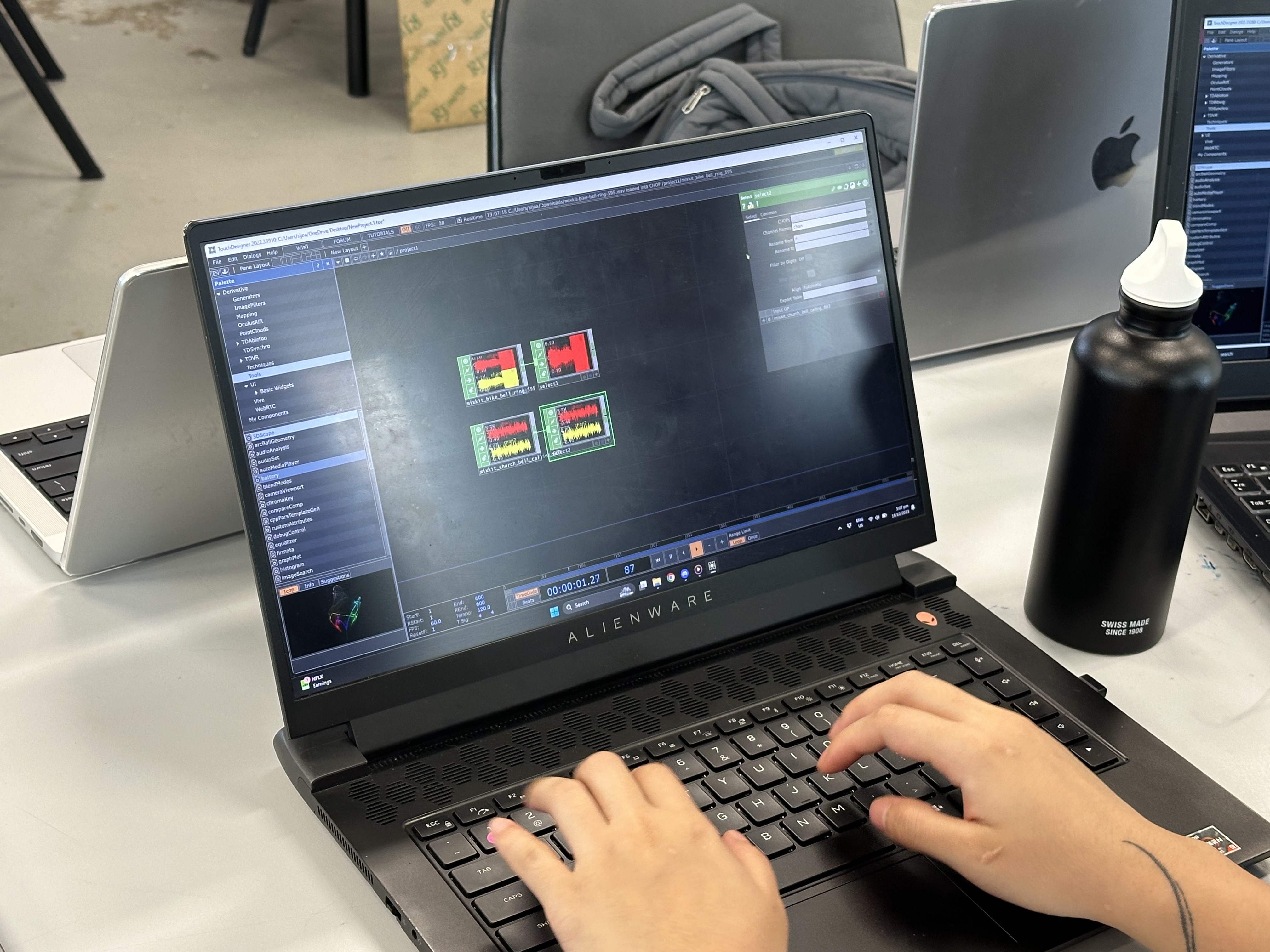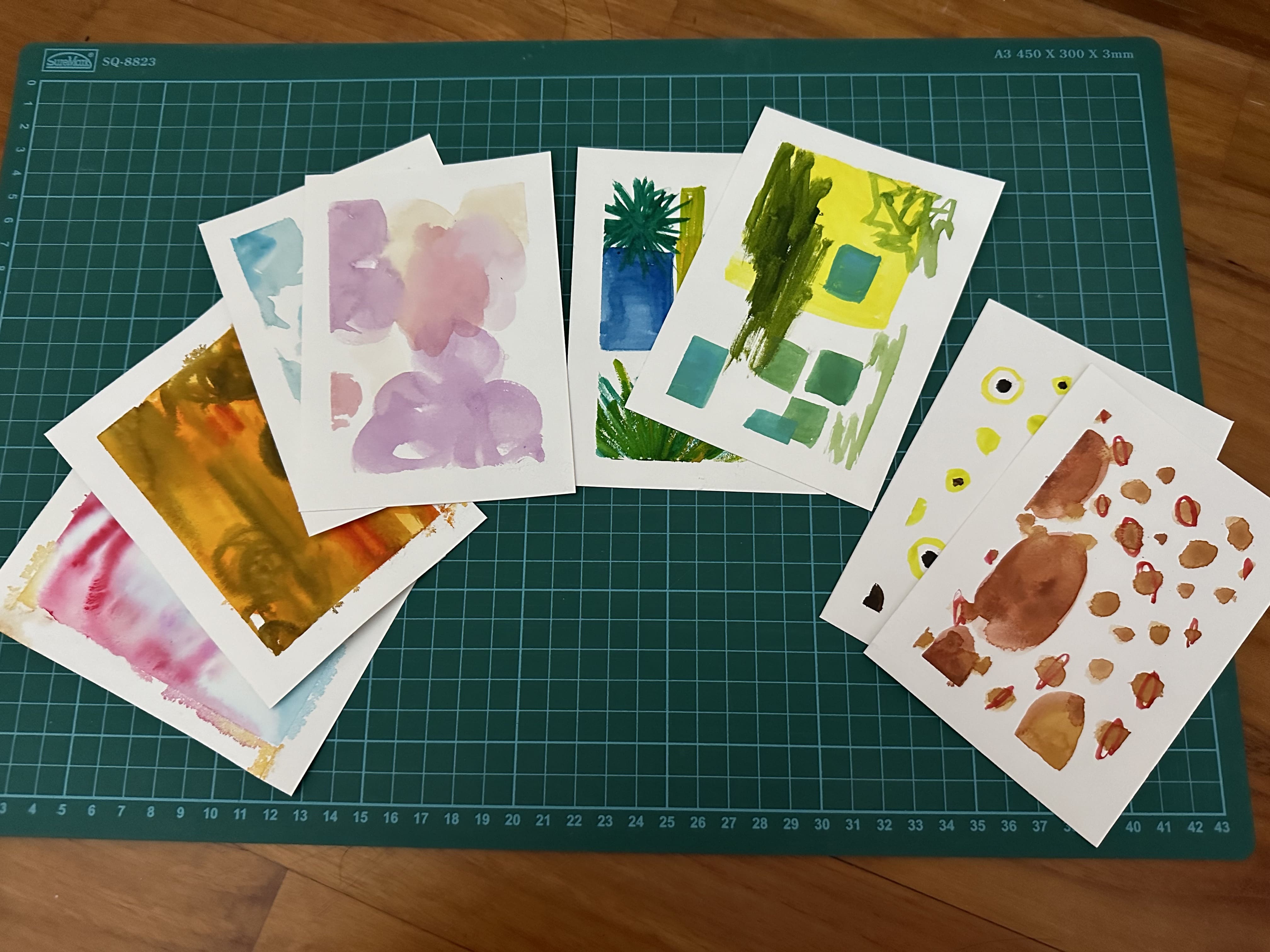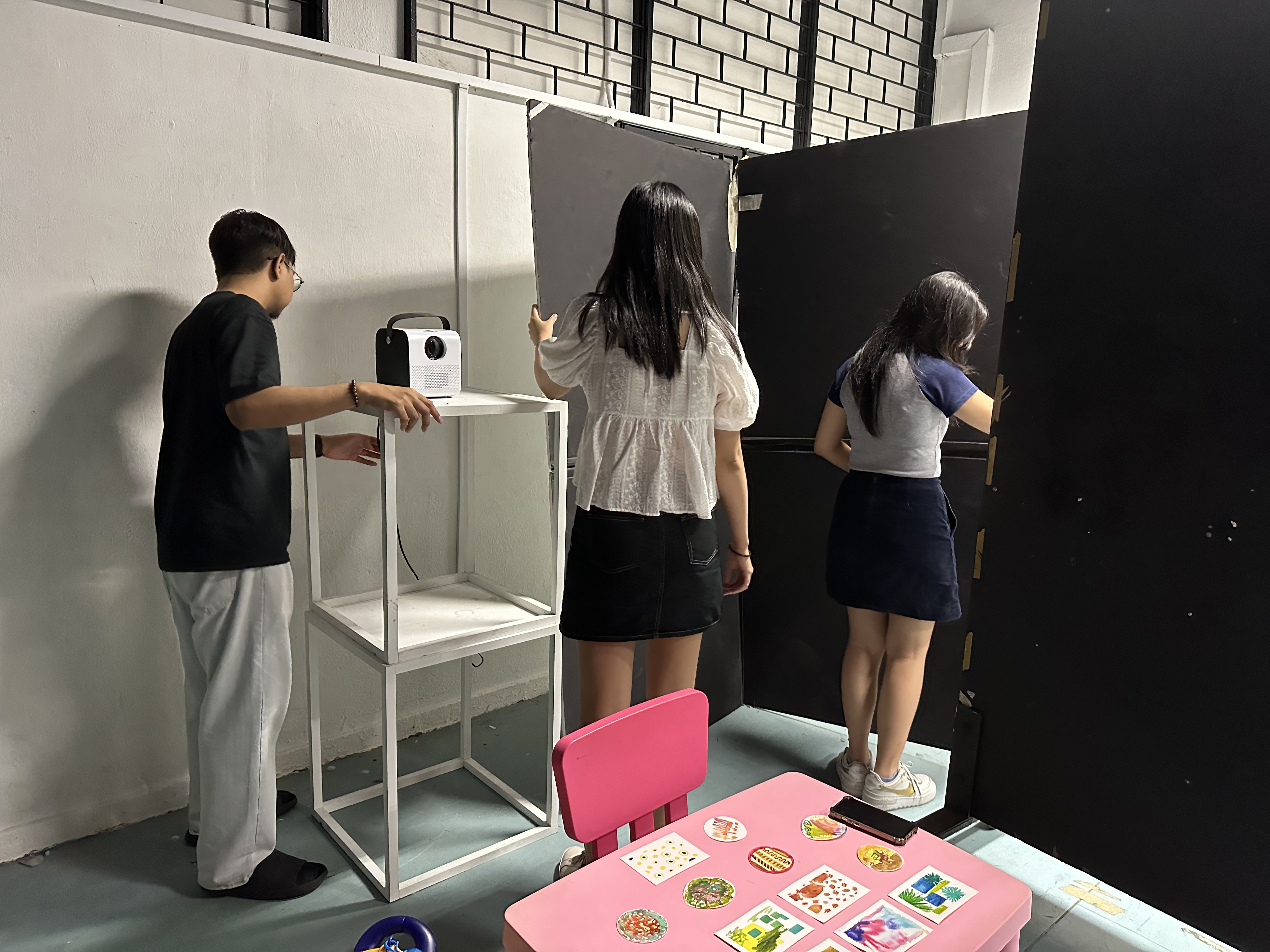Findings
The chosen data topic revolves around the visual and auditory exploration of childhood nostalgia through a unique blend of audios and TouchDesigner-generated visuals. Our project delves into the innovative use of childhood sounds, collected through surveys and participant input, to evoke nostalgic memories. The challenge lies in translating these auditory elements into visually compelling experiences, intertwining the realms of imagination and technology.
We ventured into uncharted territory by incorporating an interactive corner into our project, and also using unfamiliar software to craft an unexpected outcome. The primary dataset comprises the imaginative visualisations created through TouchDesigner, a platform known for its versatility in generating interactive and dynamic visuals. Our team's journey involves navigating conceptual challenges, technical hurdles, and collaborative dynamics to bring forth an immersive and nostalgic experience for our audience. As we explore the intersection of technology and emotion, this project aims to offer a fresh perspective on the evocative power of childhood nostalgia.
Insights we gained
Choosing to explore childhood nostalgia through audios and visuals data was driven by a desire for a multisensory and immersive experience. The idea originated from the recognition of the evocative power of childhood sounds in triggering emotions and memories. Our team ideation sessions led us to experiment with the fusion of auditory and visual elements to craft a unique narrative.
The decision to use TouchDesigner as our primary tool was motivated by its capacity to translate imaginative concepts into interactive visuals. Translating qualitative data from participant responses into authentic visual representations posed a challenge but guided our selection of five distinct audios for visualization. Through synthesizing these sounds, our aim was to convey the emotional and imaginative aspects of nostalgia, enabling the audience to reconnect with cherished memories.
Our project intended to communicate a narrative that transcended conventional storytelling, intertwining technology, childhood sounds, and visuals to create an engaging and nostalgic journey. By inviting viewers to reflect on their memories and emotions, we sought to highlight the creative possibilities at the intersection of technology and sentiment.
Design decisions
In this project, our focus centered on the integration of auditory and visual data. When determining graphics and designs, our primary emphasis was on fostering imagination, a crucial element in capturing the essence of nostalgia. Nostalgia, characterized by a sentimental yearning for past emotions, served as our inspiration, evoking memories and imaginative reflections on specific moments.
Our aesthetic approach leaned towards a playful and modern style, symbolizing the journey back to vibrant memories amid the challenges of adulthood. To enhance audience interaction, we incorporated an interactive corner, inviting viewers to engage with the sounds of nostalgia, creating an immersive experience that reconnects them with cherished memories.
Challenges
Originally, our project envisioned ASMR audios paired with visual codes inspired by childhood snacks. Yet, we refined our approach to prioritise nostalgia and imaginative elements. Initially relying on numerical values from audio data—Hertz, frequency, pitch, and tones—to generate visuals, we recognized the need for a more childhood-like aesthetic. Consequently, we gathered visual input from participants based on their nostalgic feelings, translating this into our design process.
To enhance engagement, we conceived an interactive room setup. However, challenges arose with the midi board integration into Touch Designer, impeding seamless recognition. Additionally, maintaining colour consistency between a projector and a TV screen posed hurdles. Our ongoing efforts strive to overcome these challenges, ensuring a cohesive and immersive experience for our audience within the nostalgic realms of our concept.
In our quest to generate visuals based on numeric data derived from audio, we initially encountered challenges with the hertz values. To overcome this hurdle, we pivoted our approach, opting for a more imaginative use of childhood-related sounds instead of numeric values. This decision allowed us to tap into the emotional resonance and nostalgic essence of the auditory experience.
Transitioning to the technical aspects of our project, we faced connectivity issues with the MIDI board intended to facilitate audience interaction with the visuals. Despite planning a button-controlled projection system, only one out of the twelve buttons on the MIDI board functioned as expected. In response, we adapted by switching to a conventional keyboard with basic settings, ensuring a reliable interface for operating the visual switches.
Regarding the physical setup, our original plan involved constructing huts to enclose the projector's display area, providing a darkened space for optimal visual projection. Due to time constraints, we opted for a practical solution, using blackboards to enclose the area along with children's chairs and tables. This impromptu arrangement not only addressed logistical constraints but also added a charming childhood aesthetic to our concept.
The data collection process involved a survey seeking sounds that evoke childhood nostalgia. From the responses, we selected five audios, personally recording and downloading them for playback during the exhibition, allowing the audience to visualise and reconnect with their cherished childhood memories.

Feedback
Our primary data collection involved engaging with our peers to create an interactive experience, a highlight being a favored activity where participants painted while immersed in childhood sounds.
The feedback was overwhelmingly positive, with many expressing therapeutic benefits, aligning with our goal. Participants found the experience imaginative and appreciated the uniqueness of our approach.
However, feedback from the lecturer suggested a need for a more childhood-oriented final approach, as the digitalized elements seemed overly technical. They emphasised a greater emphasis on the sounds, feeling that they were somewhat neglected in the final production.
Achievements
In our group's perspective, our achievement lies in taking the bold step of delving into unfamiliar software to create an unexpected outcome. This decision not only led us to discover and develop new skills but also enabled us to craft compelling visuals using TouchDesigner.
While the technical aspects posed challenges, the true test was in conceptualising the project, a process that demanded creativity and innovation. Fortunately, we navigated this hurdle by finding a sweet spot of curiosity within our team, driving and propelling us forward in the project.
Working collaboratively, we effectively tapped into each other's strengths, demonstrating cohesion even in the face of occasional disagreements. Through shared struggles and overcoming difficulties, we realised the collective success of our endeavour, exceeding our initial expectations.
















